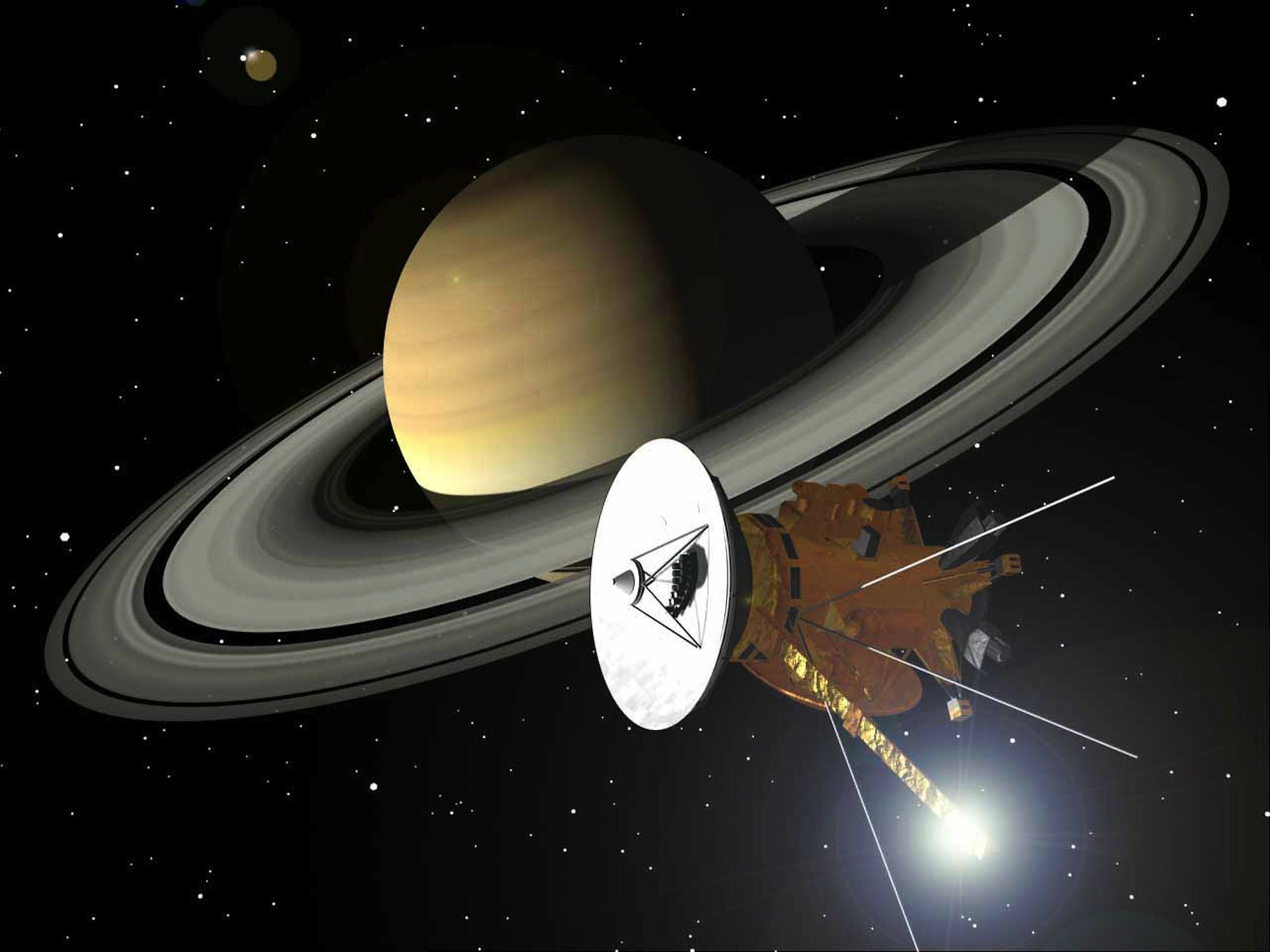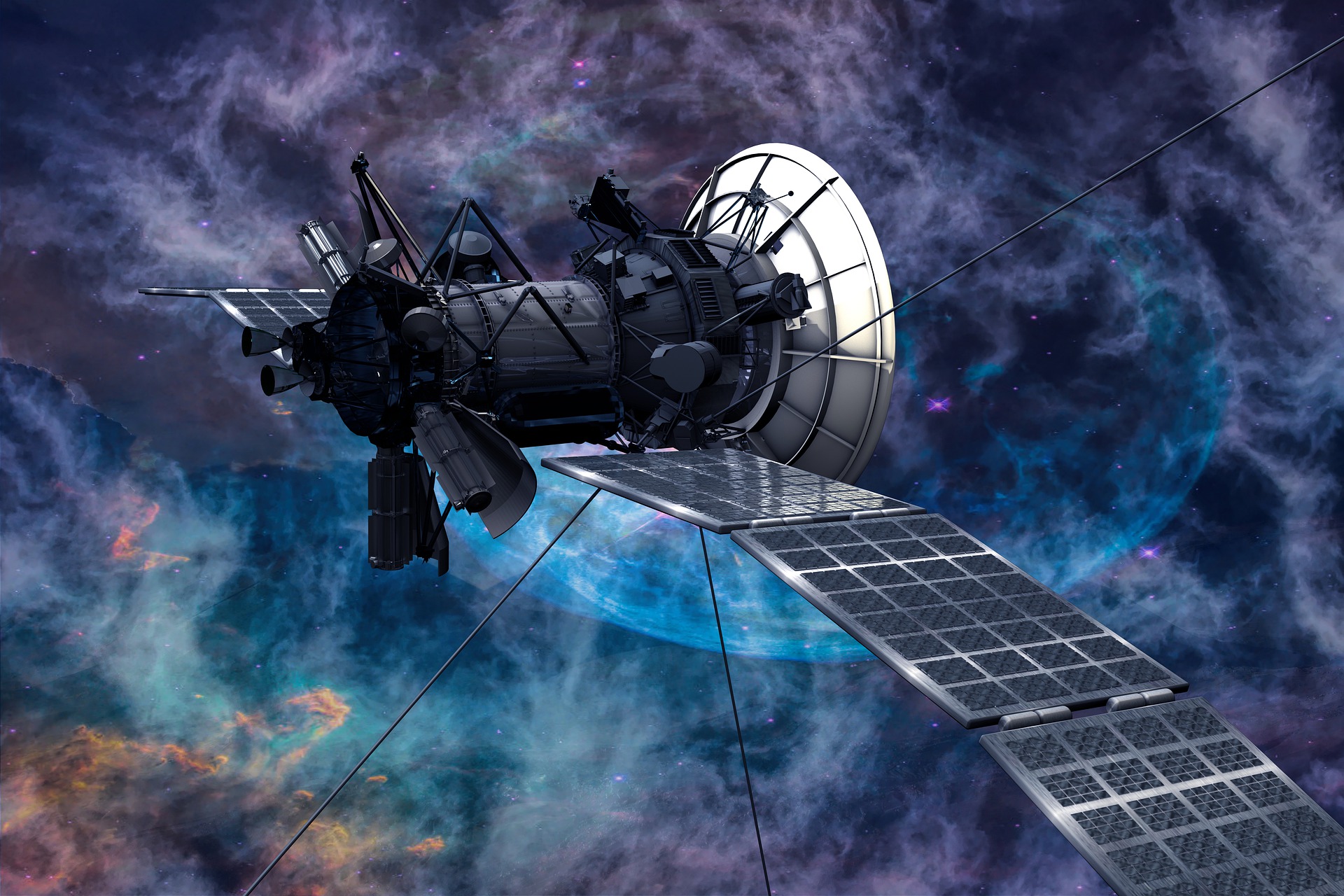Let's Go. At last found a new Earth. That's Titan.

Titan is the largest satellite of Saturn. And this is the only space object present in the solar system where there is a thick layer of atmosphere like Earth. In 1980, the spacecraft Voyager 1 passed far in front of Saturn. At that time, the spacecraft took some pictures of Saturn and sent several pictures of its orbit. The astronaut also sent another critical image of Saturn's largest satellite, Titan. It is the only satellite in the solar system with a thick layer of atmosphere.
And this moon or satellite, Titan, attracted the attention of scientists in such a way that scientists became curious to study this subject. The mission was not easy at all. That's why the world's largest space agencies, such as NASA, the Italian Space Agency, and the European Space Agency, are working together to implement a plan to launch Saturn's satellite Titan.
Which was supposed to last for about twenty years. Because of this mission, we have seen Saturn from a great distance. The specialty of this mission was that we wanted to leave our moon and land on the moon of another planet. A moon inside which everyone was unaware of the world. No one knew what secrets the dark cloud moon hid for us.

So friends, what is actually inside this moon and even the subject was that scientists saw the possibility of the life of this Titan satellite after Earth.
Another name, Planet Like Moon, also calls Titan. The name is this because Titan is the only space object in our solar system after Earth and Venus have a firm surface. And it has a thick layer of the atmosphere. If it were not a satellite of Saturn to orbit our Sun directly, then maybe today, Mercury, Venus, Earth, Mars, Titan would be included in the list of planets in our solar system.
But since it is a satellite, it is very different from the rest. Titan is more prominent in size than Mercury and Pluto. Jupiter's satellite Ganymede is followed by Titani, the second-largest moon in our solar system. You would be surprised to know that Titan is one and a half times bigger than our moon, and its diameter is 5150 kilometers. And Titan's mass is 80 percent greater than our moon.
![[Downloader.la]-61c41b6bd0ed7.jpg](https://images.hive.blog/DQmS1e3zyYq8GRf5K5sFSKRkK6jFAckodXm5gZ1AQ6QyWuz/[Downloader.la]-61c41b6bd0ed7.jpg)
Scientists have been intrigued by images of Titan sent from the Voyager One spacecraft. The Cassini Huggins spacecraft was sent from Earth to Saturn on October 15, 1997, with the subject in mind. After a long 7-year journey, the Cassini spacecraft finally entered Saturn's orbit on July 1, 2004. Three other spacecraft were sent to Saturn earlier, namely Pioneer 1, Voyager 1, and Voyager 2.
And this is why we had so much information about Saturn. With the help of which, it was advantageous to send Cassini there. But those missions passed all these spacecraft just in front of Saturn. However, Cassini was the first spacecraft to enter its orbit.
The first time Cassini Express sent us a perfect picture of Saturn, which allowed us to see Saturn so closely for the first time and get to know it.
![[Downloader.la]-61c41bd534d3f.jpg](https://images.hive.blog/DQmeW5MfrgXfaTkGvQxjpD2jXMk8bvRMuam7sqMj7zrwy9D/[Downloader.la]-61c41bd534d3f.jpg)
Cassini Spacecraft was not alone in this seven-year journey. He was accompanied by a friend who landed on Saturn's largest and most exceptional satellite, Titan, and sent information to us.
It was none other than a lander named Huygens. And Lander would tell us what secrets were hidden beneath Titan's dense atmosphere. NASA built the Cassini spacecraft, and its partner, Lander Huygens, was made by the European Space Agency. In 2004, Cassini Huygens was able to enter Titan's orbit. On December 24, 2004, Huygens separated from Lander Cassini and moved on to the next mission.
On the other hand, the casino started sending us some pictures of it from the orbit of the spacecraft item. But in this picture, nothing but Titan's thick clouds could be seen. But with the help of a camera mounted in Cassini, it is possible to take photographs under these dense clouds. And we see some beautiful pictures.
After the Huygens reached the atmosphere of Titan, it began to send a series of images to Earth. Due to the low density of Titan, its gravitational force is deficient, and this is why the atmosphere is spread far and wide. Next to it comes the time when Huygens penetrates Titan's atmosphere at a speed of 6 kilometers per second and moves towards its surface. Surprisingly, only dense velocities and dust were seen up to 500 km of Titan's atmosphere during this time. Then after opening the parachute, it was slowly advancing towards the surface. And as it progresses, we begin to see a clearer picture. We see small mountains. The image sent by Huygens also shows a river-like replica on the surface of Titan, just as we have on Earth. The temperature here is around -179 degrees Celsius. So how is it possible for rivers and oceans to exist in liquid form at such low temperatures?
![[Downloader.la]-61c41c3b511a3.jpg](https://images.hive.blog/DQmRGLFnwyD8jatqPJZo3AMNmRyTUpa2pcK5CPAgkzKbf6H/[Downloader.la]-61c41c3b511a3.jpg)
Although Titan's dense atmosphere contains 98.4% nitrogen, 1.4% methane, and 0.1% hydrogen gas, this means that Titanic is the only planet after Earth to have nitrogen in its atmosphere. But despite all this, scientists still have no idea what the liquid found in the river on Titan is. Because water can't be liquid at such a low temperature, so let me tell you, friends, that scientists have found the answer to this question in the atmosphere of Titan. And the answer was that in Titan's climate, after nitrogen, methane was a component that was in high levels. And scientists, after conducting several experiments in the laboratory, found that elements like methane could be immersed in liquids at such low temperatures.
The answer was that the river at Titan was filled with methane, not water, but liquid. Friends, you have heard that Liquid Methane is methane. You will be surprised to hear that Titany is the only place in our solar system that looks a lot like our Earth. There are rivers like our Earth, there are seas, and there are mountains. But the two forms and structures are entirely different. Titan's surface is made not of soil but icy hydrocarbons and water. In other words, all these hills and mountains in Titan are covered with ice. Due to the low temperature of Titan, water is present here in the form of solid rock and methane in the form of liquid. On January 14, 2005, Huygens landed on the surface of the Lander Titan and sent us a picture shortly after landing. Friends, did you know that Titan is such a space object after Mars that we managed to land there despite being so far away.
You are surprised to know that this strange and exceptional planet gets rain, but it is not water but the rain of liquid methane. Titan is such a space object that our work is full of the river made of Asha fuel material.
![[Downloader.la]-61c41c98e78c6.jpg](https://images.hive.blog/DQmdXJ6n7h4MCaJbgLex73ycDwoHjyoA43NTmZXMhPLoRzG/[Downloader.la]-61c41c98e78c6.jpg)
And according to scientists, the presence of liquid methane in Titan could quickly alleviate decades of human fuel shortages. Scientists have speculated that Titan's methane-formed rivers and oceans may contain a wide variety of creatures. Whose form is quite different from that of the living beings on EarthEarth. And it could be that some other type of Titanic bacteria is living under this river. According to them, there is no shortage of organic compounds in Titan. And life can exist here. The only difference is that this creature with the atmosphere of Titan is no less than an alien to us. Because our world is entirely different from the species found, friends, you will be surprised that Titan is so far away from our EarthEarth that it takes more than an hour for the data sent to us to reach us. We've had to wait a full seven years to find out about Titan's surface.